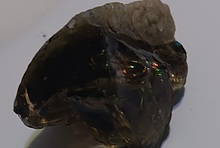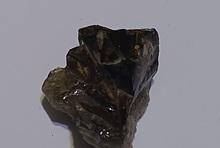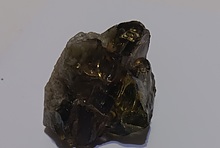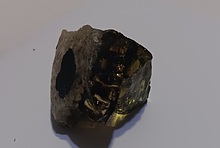Home PageAbout MindatThe Mindat ManualHistory of MindatCopyright StatusWho We AreContact UsAdvertise on Mindat
Donate to MindatCorporate SponsorshipSponsor a PageSponsored PagesMindat AdvertisersAdvertise on Mindat
Learning CenterWhat is a mineral?The most common minerals on earthInformation for EducatorsMindat ArticlesThe ElementsThe Rock H. Currier Digital LibraryGeologic Time
Minerals by PropertiesMinerals by ChemistryAdvanced Locality SearchRandom MineralRandom LocalitySearch by minIDLocalities Near MeSearch ArticlesSearch GlossaryMore Search Options
The Mindat ManualAdd a New PhotoRate PhotosLocality Edit ReportCoordinate Completion ReportAdd Glossary Item
Mining CompaniesStatisticsUsersMineral MuseumsClubs & OrganizationsMineral Shows & EventsThe Mindat DirectoryDevice SettingsThe Mineral Quiz
Photo SearchPhoto GalleriesSearch by ColorNew Photos TodayNew Photos YesterdayMembers' Photo GalleriesPast Photo of the Day GalleryPhotography
╳Discussions
💬 Home🔎 Search📅 LatestGroups
EducationOpen discussion area.Fakes & FraudsOpen discussion area.Field CollectingOpen discussion area.FossilsOpen discussion area.Gems and GemologyOpen discussion area.GeneralOpen discussion area.How to ContributeOpen discussion area.Identity HelpOpen discussion area.Improving Mindat.orgOpen discussion area.LocalitiesOpen discussion area.Lost and Stolen SpecimensOpen discussion area.MarketplaceOpen discussion area.MeteoritesOpen discussion area.Mindat ProductsOpen discussion area.Mineral ExchangesOpen discussion area.Mineral PhotographyOpen discussion area.Mineral ShowsOpen discussion area.Mineralogical ClassificationOpen discussion area.Mineralogy CourseOpen discussion area.MineralsOpen discussion area.Minerals and MuseumsOpen discussion area.PhotosOpen discussion area.Techniques for CollectorsOpen discussion area.The Rock H. Currier Digital LibraryOpen discussion area.UV MineralsOpen discussion area.Recent Images in Discussions
Mineralogical ClassificationIMA 2012-081= Kihlmanite-(Ce), published

10th Oct 2014 20:13 UTCKnut Edvard Larsen 🌟 Manager
Yakovenchuk, V. N., Krivovichev, S. V., Ivanyuk, G. Y., Pakhomovsky, Ya. A., Selivanova, E. A.,Zhitova, E. A., Kalashnikova,G. O., Zolotarev, A. A., Mikhailova, J. A., Kadyrova, G. I. (2014): Kihlmanite-(Ce), Ce2TiO2(HCO3)2(H2O), a new rare-earth mineral from the pegmatites of the Khibiny alkaline massif, Kola Peninsula, Russia. Mineralogical Magazine, 78, 483-496.
Abstract:
Kihlmanite-(Ce), Ce2TiO2(HCO3)2(H2O), is a new rare-earth titanosilicate carbonate, closely related to tundrite-(Ce). It is triclinic, P1, a = 4.994(2), b = 7.54(2), c = 15.48(4) Å, α = 103.5(4), β = 90.7(2), γ = 109.2(2)°, V = 533(1) Å3, Z = 2 (from powder diffraction data) or a = 5.009(5), b = 7.533(5), c = 15.407(5) Å, α = 103.061(5), β = 91.006(5), γ = 109.285(5)°, V = 531.8(7) Å3, Z = 2 (from single-crystal X-ray diffraction data). The mineral was found in the arfvedsonite-aegirine-microcline vein in fenitized metavolcanic rock at the foot of the Mt Kihlman (Chil'man), near the western contact of the Devonian Khibiny alkaline massif and the Proterozoic Imandra-Varzuga greenstone belt. It forms brown spherulites (up to 2 cm diameter) and sheaf-like aggregates of prismatic crystals, flattened on {010} and up to 0.5 mm diameter. Both spherulites and aggregates occur in interstices in arfvedsonite and microcline, in intimate association with golden-green tundrite-(Ce). Kihlmanite-(Ce) is brown, with a vitreous lustre and a pale yellowish-brown streak. The cleavage is perfect on {010}, parting is perpendicular to c and the fracture is stepped. Mohs hardness is ∼3. In transmitted light, the mineral is yellowish brown; pleochroism and dispersion were not observed. Kihlmanite-(Ce) is biaxial (+), α = 1.708(5), β = 1.76(1), γ = 1.82(1) (589 nm), 2V calc = 89°. The optical orientation is Y ∧ c = 5°, other details are unclear. The calculated and measured densities are 3.694 and 3.66(2) g cm3, respectively. The mean chemical composition, determined by electron microprobe, is: Na2O 0.13, Al2O3 0.24, SiO2 9.91, CaO 1.50, TiO2 11.04, MnO 0.26, Fe2O3 0.05, Nb2O5 2.79, La2O3 12.95, Ce2O3 27.33, Pr2O3 2.45, Nd2O3 8.12, Sm2O3 1.67, Gd2O3 0.49 wt.%, with CO2 15.0 and H2O 6.0 wt.% (determined by wet chemical and Penfield methods, respectively), giving a total of 99.93 wt.%. The empirical formula calculated on the basis of Si + Al = 1 atom per formula unit is (Ca0.16Na0.11Mn0.02)Σ0.29<(Ce0.98La0.47Pr0.09Nd0.29Sm0.06Gd0.02)Σ1.91(Ti0.82Nb0.12)Σ0.94O2(Si0.97Al0.03)Σ1O4.02(HCO3)2.01>(H2O)0.96. The simplified formula is Ce2TiO2(SiO4)(HCO3)2·H2O. The mineral reacts slowly in cold 10% HCl with weak effervescence and fragmentation into separate plates. The strongest X-ray powder-diffraction lines are as follows: 15.11(100)(001), 7.508(20)(002), 6.912(12)(011), 4.993(14)(003), 3.563(15)(021), 2.896(15)(122). The crystal structure of kihlmanite-(Ce) was refined to R 1 = 0.069 on the basis of 2441 unique observed reflections (MoKα, 293 K). It is closely related to the crystal structure of tundrite-(Ce) and is based upon layers parallel to (001). Kihlmanite-(Ce) can be considered as a cation-deficient analogue of tundrite-(Ce). The mineral is named in honour of Alfred Oswald Kihlman (1858 1938), a remarkable Finnish geographer and botanist who participated in the Wilhelm Ramsay expeditions to the Khibiny Mountains in 1891–1892. The mineral name also reflects its occurrence at the Kihlman (Chil'man) Mountain.
Mineralpage updated.




Mindat.org is an outreach project of the Hudson Institute of Mineralogy, a 501(c)(3) not-for-profit organization.
Copyright © mindat.org and the Hudson Institute of Mineralogy 1993-2024, except where stated. Most political location boundaries are © OpenStreetMap contributors. Mindat.org relies on the contributions of thousands of members and supporters. Founded in 2000 by Jolyon Ralph.
Privacy Policy - Terms & Conditions - Contact Us / DMCA issues - Report a bug/vulnerability Current server date and time: April 19, 2024 11:10:58
Copyright © mindat.org and the Hudson Institute of Mineralogy 1993-2024, except where stated. Most political location boundaries are © OpenStreetMap contributors. Mindat.org relies on the contributions of thousands of members and supporters. Founded in 2000 by Jolyon Ralph.
Privacy Policy - Terms & Conditions - Contact Us / DMCA issues - Report a bug/vulnerability Current server date and time: April 19, 2024 11:10:58











